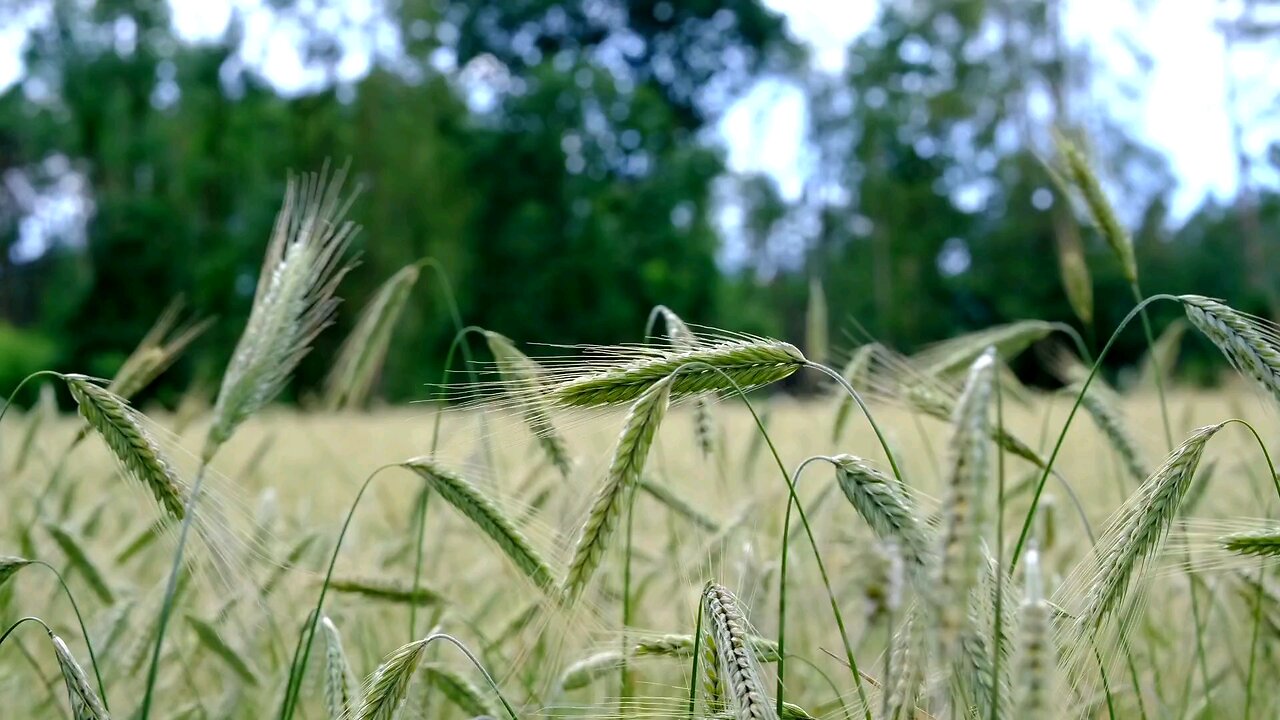Premium Only Content

"Understanding Wheat: The Staple Grain That Sustains the World"
Wheat is one of the world's most important cereal grains and a staple food for a significant portion of the global population. It belongs to the grass family (Poaceae) and is cultivated primarily for its seeds, which are used to produce flour. Here's an overview of wheat:
### History and Cultivation
- **Origins**: Wheat was first domesticated in the Fertile Crescent, an area that includes parts of modern-day Iraq, Syria, Israel, and Jordan, around 10,000 years ago. It played a crucial role in the development of human civilization by enabling settled agricultural communities.
- **Types of Wheat**: There are several types of wheat, including:
- **Common Wheat (Triticum aestivum)**: Used for bread, pastries, and some noodles.
- **Durum Wheat (Triticum durum)**: Used for pasta and semolina products.
- **Emmer, Einkorn, and Spelt**: Ancient varieties that are less commonly grown today but are sometimes used for specialty products.
- **Growing Conditions**: Wheat grows best in temperate climates with moderate rainfall. It is adaptable to a range of soil types but prefers well-drained, fertile soils.
### Uses
- **Food Products**: Wheat is primarily used to make flour, which is then used in a variety of food products like bread, pasta, pastries, cereals, and many baked goods.
- **Animal Feed**: Wheat by-products, such as bran and wheat germ, are used as animal feed.
- **Non-Food Uses**: Wheat straw can be used in biofuel production, paper making, and as a building material.
### Nutritional Value
- **Carbohydrates**: Wheat is a rich source of carbohydrates, mainly in the form of starch.
- **Protein**: It contains a significant amount of protein, including gluten, which gives bread its elasticity.
- **Fiber**: Whole wheat products are high in dietary fiber, which is beneficial for digestive health.
- **Vitamins and Minerals**: Wheat is a good source of B vitamins (especially niacin, thiamine, and folate), iron, magnesium, and zinc.
### Global Production
- **Major Producers**: The top wheat-producing countries include China, India, Russia, the United States, and France.
- **Trade**: Wheat is a major commodity in global trade, with countries like Russia, the United States, Canada, and Australia being leading exporters.
### Challenges
- **Pests and Diseases**: Wheat crops are susceptible to pests like aphids and diseases like rusts and blights.
- **Climate Change**: Changes in climate patterns can affect wheat yields. Droughts, floods, and extreme temperatures pose significant risks.
- **Sustainability**: There are ongoing efforts to improve the sustainability of wheat farming through better water management, soil conservation practices, and the development of drought-resistant wheat varieties.
### Research and Development
- **Genetic Improvement**: Advances in genetic research are leading to the development of wheat varieties with improved yield, disease resistance, and climate resilience.
- **Biotechnology**: Biotechnological approaches, including genetic modification, are being explored to enhance the nutritional value and productivity of wheat.
Wheat remains a cornerstone of global food security and continues to be a focus of agricultural research and development.
-
 LIVE
LIVE
NewsTreason
1 hour agoDECLAS w/ Rambo & Dave: Nuremberg 2.0 | MTG Exits Stage Left | Mamdani Psyop Confirmed, 8pm EST
7,217 watching -
 LIVE
LIVE
SpartakusLIVE
3 hours agoTeam BUNGULATORS || From HUGE WZ DUBS to TOXIC ARC BETRAYALS
1,157 watching -
 LIVE
LIVE
meleegames
55 minutes agoSONG REQUESTS CLOSED - Melee Music - Beat Hazard 3 - Devil Inside
113 watching -
 LIVE
LIVE
GritsGG
27 minutes ago#1 Most Warzone Wins 4015+!
74 watching -
 37:06
37:06
Camhigby
3 hours ago $8.01 earnedI Was Stalked By DRONE At Dearborn MOSQUE
15.1K18 -
 LIVE
LIVE
Biscotti-B23
3 hours ago🔴 LIVE STREAM ENDS WHEN I GET 100 WINS 🥵 INVINCIBLE VS CLOSED ALPHA
74 watching -
 12:38
12:38
Timcast
1 day agoJasmine Crocket HUMILIATED By CNN To HER FACE Over Epstein LIE | Tim Pool
94.4K69 -
 19:32
19:32
MetatronHistory
21 hours agoWas Nazism Left Wing or Right Wing? An Answer From History
15.7K36 -
 DVR
DVR
Mally_Mouse
21 hours ago🌶️ 🥵Spicy BITE Saturday!! 🥵🌶️- Let's Play: Human Fall Flat
52.6K3 -
 4:36
4:36
GreenMan Studio
3 hours agoTHE RUMBLE COLLAB SHOW EP. 5 W/Greenman Reports
222